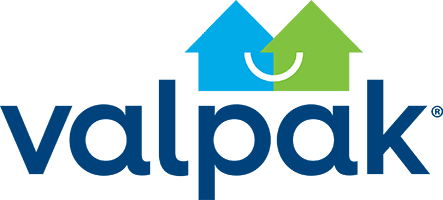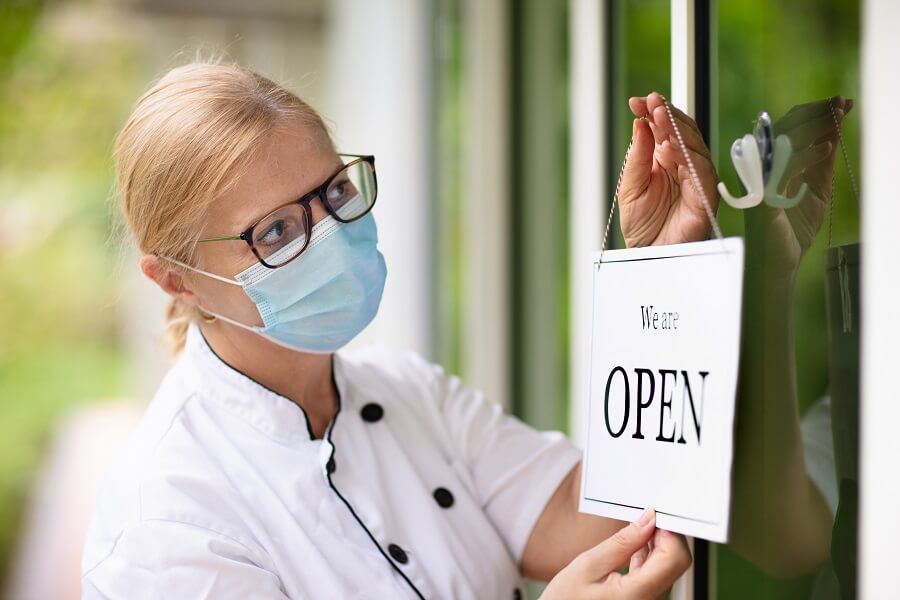Reading time: 6 minutes
Without question, the coronavirus pandemic has had a profound impact on our small business community. Many businesses shuttered – Yelp estimates nearly 140,000 businesses as of June 25 – and millions of Americans are still out of work. Businesses fortunate enough to remain open (in whatever capacity) scaled back services, reduced hours, and pivoted to meet the changing needs of their customers.
People’s health and safety are the utmost priority. However, our economy must rebound to avoid further financial devastation. That starts with the reopening of businesses that temporarily closed due to state and local mandates or their own health concerns.
The reopening of small businesses (which make up 99.9% of all U.S. businesses and employ 47.1% of the workforce) will strengthen communities and drive an economic turnaround. But it must be done safely:
1. Follow State and Local Guidelines
Governments across all 50 states imposed restrictions and regulations on businesses – some of which have yet to be lifted. Start your reopening plan by identifying the state and local restrictions that have been lifted, as well as the regulations/guidelines you must continue to follow to operate your business.
2. Familiarize Yourself with CDC Recommendations
The Centers for Disease Control and Prevention (CDC) frequently updates its site with the most up-to-date data, analysis and research regarding the coronavirus. Your state and local governments may require you to adhere to CDC recommendations, but even if they don’t, CDC guidance may make it easier for you to open and operate your business in a safe manner.
3. Put Your Plan Together
Create a back-to-work plan that includes:
- List of all employees and when they will return to work
- Changes you will need to make to your place of business
- Signage and other visible cues to communicate new policies
- Support system for keeping employees and customers safe after reopening
- Short-term marketing plan to stay on track to reach your business goals
Depending on your specific industry, you may need to implement a phased reopening, which could include flexible work policies like work from home and rotating shifts.
4. Stay Home If You’re Sick
It is imperative that anyone not feeling well stays home. If local law allows, consider performing temperature checks and asking employees to complete a daily wellness questionnaire at the start of each shift. Some questions might include:
- I have not tested positive for COVID-19 in the past 14 calendar days.
- I have measured my body temperature within the last 3 hours and the reading was lower than 100.4°F.
- I am not experiencing any symptoms consistent with COVID-19 (including, but not limited to, fever, persistent dry cough, chest pain, loss of sense of smell/taste, body aches, etc.).
- I have not had contact with anyone confirmed or suspected of having COVID-19 in the past 14 days.
- I have not traveled outside my state or internationally in the past 14 days.
5. Require Face Masks
Your state and local governments may have imposed a facemask order, requiring the wearing of face coverings in public. You can view a list of statewide orders here. Even if your local orders are only a recommendation, you may choose to make wearing facemasks mandatory in your place of business, citing Occupational Safety and Health Administration (OSHA) and CDC guidance.
Note: While you may exercise your right as a business owner to require employees to wear facemasks, you are not required to provide cloth face coverings for your employees per OSHA’s guidelines.
6. Clean and Disinfect Often
Cleaning and disinfecting frequently touched surfaces often can help slow the spread of COVID-19 and prevent an outbreak at your facility. Common high-touch surfaces include:
- Tables
- Doorknobs
- Light switches
- Countertops
- Handles
- Desks
- Phones
- Keyboards
- Toilets
- Faucets
- Sinks
- Shopping carts/baskets
- Point-of-sale (POS) keypads
The CDC also recommends using an EPA-registered household disinfectant or diluted household bleach solutions (if appropriate for the surface). Alcohol solutions with at least 70% alcohol may also be used. Visit the CDC’s Cleaning and Disinfecting Your Facility page for more information and instructions on making a bleach solution.
7. Set Up Social Distancing Markers
The CDC has urged Americans to practice social (or physical) distancing, staying a minimum of 6 feet apart. To help employees and guests adhere to the CDC’s guidelines, block off tables, benches, and chairs that are within 6 feet of each other. Put markers on the floor where your customers should stand if they need to wait in line.
8. Offer Contactless Payment
Contactless payment is exactly how it sounds: Customers do not physically swipe, insert, or hand their card to another person when paying for goods or services. Instead, they tap their card (or smartphone) on the POS terminal. If you have a newer POS system, your terminal may have contactless payment technology, called near-field communication (NFC). If you are running an older system that does not have NFC capabilities, you can call the bank or issuer and request an updated one.
Not all credit/debit cards have contactless technology embedded in the card. But all major U.S. credit card issuers are rolling out contactless cards or have announced plans to do so in the near future. However, POS terminals with NFC technology accept mobile wallets and apps (Apple Pay, Google Pay, Samsung Pay, etc.).
While the 8 steps above are a good starting point, some businesses need to consider additional steps to safely open:
Entertainment
- Take appointments only
- Check visitor temps
- Limit guests
Restaurants
- Set up mobile ordering
- Provide curbside pickup/delivery
- Space out seating
- Limit indoor seating
Retail
- Limit in-store customers
- Provide curbside pickup/delivery
Salons, Spas and Fitness Centers
- Take appointments only
- Check visitor temps
Reopening Resources
American Industrial Hygiene Association (AIHA): Back to Work Safely
OSHA: Guidance for Preparing Workplaces for COVID-19
U.S. Chamber of Commerce State-by-State Reopening Guidance
Whitehouse.gov: Guidelines for Opening Up America Again
Financial Resources
Coronavirus.gov: Supporting Small Businesses
SBA.gov: Coronavirus (COVID-19): Small Business Guidance and Loan Resources
Health and Safety Resources
CDC: Get the Facts About Coronavirus
HHS.gov: Community-Based Testing Sites
WHO.int: Coronavirus Disease (COVID-19) Pandemic
Valpak Resources
COVID-19 Crisis Recovery for Businesses
Marketing Your Small Business During the Coronavirus Crisis
Did you know 77% of consumers think it’s important for businesses to keep advertising during the COVID-19 crisis? Valpak can help you communicate your reopening safety measures to ensure local consumers feel comfortable doing business with you. Our marketing reps are here to help you navigate the rapidly changing environment and to help small businesses like yours grow with direct mail and digital marketing. Contact your local Valpak office to get started and we’ll walk you through how you can reach thousands of consumers in your community every month.
This resource guide is brought to you by Valpak and is intended for informational purposes only. Valpak is not a health or infectious disease expert and is not responsible for your use or reliance on any information contained herein. Please check the laws in your community and adhere to local restrictions for reopening businesses.




